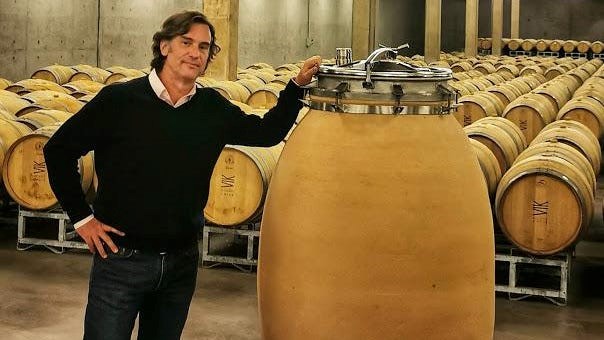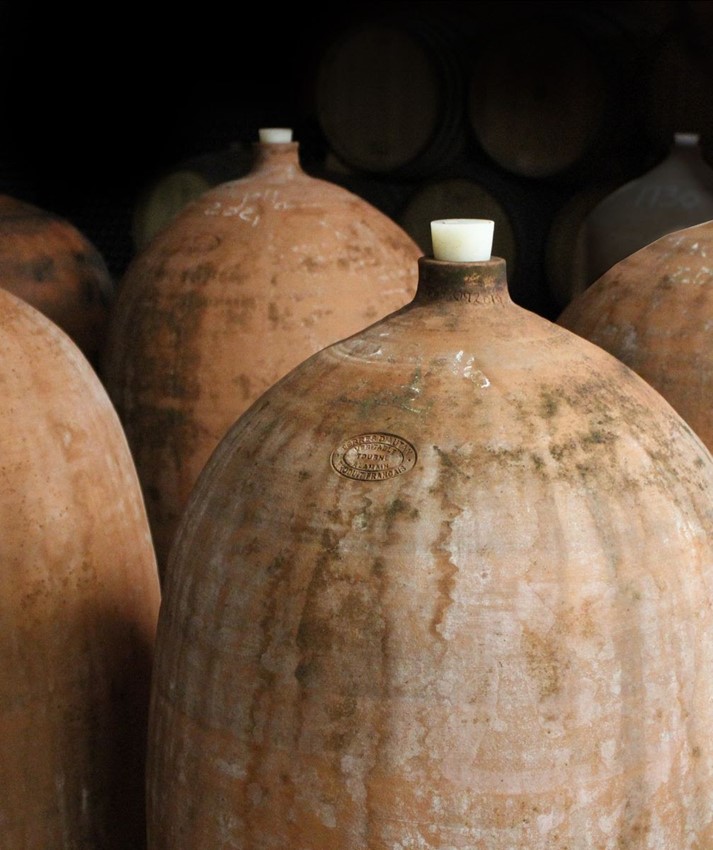What is amphora winemaking?
Written by Emily Humphreys
Large clay vessels or ‘amphora’ have been used to transport and store liquids for thousands of years. Their use in winemaking can be traced back to the Neolithic Period, when early vintners would have used these clay vessels to both ferment and store their wine.
Modern day winemaking mostly revolves around the use of oak barrels, stainless steel or concrete fermentation vessels, but the use of amphora has gained popularity in recent years with the rise of natural and biodynamic winemaking and a desire for minimal intervention in the cellar. Amphorae are neutral, porous vessels. They allow wine to breath, without imparting tannin or flavour as oak does, and are particularly suited to making skin-contact or orange styles of wine. Although not all amphora made wine is orange, and not all orange wine is made in amphora.

Cristián Vallejo, of Chile’s Vik winery, gets his wines through micro-oxygenation in clay amphoras made with the estate's own clay.
Long cultural history
In Portugal these clay vessels are called talha, in Spain tinaja, and Italy giarre. But it is Georgia, where they are known as qvevri, that the culture of amphora winemaking originates. Knowledge and experience of qvevri manufacturing and winemaking are an intrinsic part of the country’s cultural heritage, formally recognised by UNESCO and passed down from generation to generation. Georgia is also one of the few places in the world where the skill to make clay vessels of this size still thrives.
Built from clay, layer by layer over a process of a month - like cooperage - there's an art to it. They are dried and then fired in a huge outdoor wood oven for about a week at insanely hot temperatures before finally being lined with wax or resin.
A minimal interventionist’s dream
For such an ancient design, amphorae are an engineering triumph. Resembling an upside-down teardrop, they are often buried in the ground in well ventilated cellars. Their shape creates convection currents that circulate the wine (like modern day concrete eggs) and where the fermentation temperature is naturally regulated. Lighter and aromatic wines are made in smaller amphorae where they ferment at cooler temperatures. More structured orange wines and reds favour larger vessels with warmer ferments. This promotes strong yeast growth - helpful for those who favour wild yeast fermentation.
After fermentation, the lees collect in the conical bottom tip. This helps to naturally clarify the wine, and restricts contact between lees and wine, thus limiting the chance of reduction. All of this means the amphora winemaker does not need to use as many additives or processing aids as in conventional winemaking… if any at all.

Rouvalis amphorae at their cellar.
Modern Day revival
Despite the obvious challenges, most amphorae are still sourced from Georgia, but increasingly producers are seeking to use local clay and craftsmen where possible.
Not only is this the most sustainable choice but, for winemakers like Cristián Vallejo, of Chile’s Vik winery, by using the unique clay from their vineyards it’s also about strengthening the connection between wine and terroir. While for traditionalists it may be an all or nothing approach, for others, clay vessels are now one more piece in the modern-day winemaker’s toolkit.

